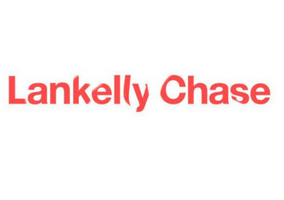In recent years, charities have faced a perfect storm of Covid-19, the cost-of-living crisis and austerity, all combining to cause rising demand for services and increased costs.
This has been compounded in recent months by a new challenge. Several large and well-known funders have closed applications, changed their priorities, or decided to spend down their funds.
Many charities that I’ve spoken to are extremely fearful about this new challenge. Every news story about a major closure increases the anxiety across the sector.
We need to move from nervous whispers to an open and productive conversation about why this is happening and the pressures that funders themselves are facing.
Rising demand
At the heart of the issue is rising demand and increased applications for grants.
When City Bridge Foundation recently decided to close to new applications for a year, it said “the recent surge in funding applications has taken us, and other funders by surprise”.
I spoke to someone recently who runs a VCSE grants programme. Applications had been rising steadily, but this year saw a 40% increase. This story is being played out across the sector.
Foundations who are closing have pointed out how they are receiving so many more applications than they can fund and how few can be successful.
I’ve spent a lot of my career as a funder, and I know how uncomfortable it feels to be rejecting so many applications and how hard the decision to shut would have been.
We can argue about whether this was the right move but first we need to fully understand what’s causing this increase in grant applications.
Replacing lost income
From speaking to people on the funder and charity side, several factors have emerged as common themes.
Local government funding challenges are of course nothing new. Austerity is a teenager now. But are they starting to bite even more now?
We recently pointed out how much charities are propping up contracts from the public sector with the average charity contributing 35% of the value of a public sector contract.
This year, two local Age UK charities have closed. These are often one of the bedrock charities in an area and I expect they would have run service delivery contracts for local authorities.
When one closed, it said it was due to “severe financial challenges” including diminishing funding opportunities.
Research also points to decreases in the number of people giving and a drop in donations from major philanthropists.
Charities may be turning to trusts and foundations to fill the gap.
A domino effect
Trusts and foundations may also be seeing a rise in demand from charities due to other funders who have closed applications or changed their priorities.
This domino effect can create a vicious circle where excess demand snowballs and affects more funders.
For example, the Tudor Trust recently announced it was “winding down our current grantmaking strategy, re-evaluating and developing a new strategy centred around racial, social and economic justice”.
These pauses for strategic reflection create a gap for the organisations who were previously supported. It’s inevitable that this demand won’t just go away – it will fall upon the rest of the funding sector.
Successful outreach by funders to underserved communities
There has, quite rightly, been a big focus in recent years on reaching out to underserved communities.
Some funders are rightly more interested in supporting organisations led by and for these communities.
Could part of the increase in demand be because that outreach was successful? Greater awareness of funding opportunities may have sparked new interest – at least one funder I spoke to felt this was the case.
Preventing a closures crisis
Regardless of the pressures on funders, many of us remain very concerned about what the future looks like for a lot of charities. We face widespread closures across the sector and those which survive might be based on their cash flow rather than their impact.
To prevent a closures crisis, we need to understand the problem better, including who is applying and who is receiving funding. Are some sectors doing better than others? Are smaller charities struggling more? Are funders actually giving more to underserved communities?
Funders should have the answers to a lot of these questions within their applications and reporting. At NPC, we’re already working through our Open Philanthropy programme to increase transparency and share insight with the sector.
Spending more now?
Many would say that funders simply need to spend more now. But there is a delicate balance to be made during a crisis.
Heather Taylor of Trust for London recently outlined this dilemma eloquently: “One way to think about this is to put ourselves in the shoes of our trustees at the end of the Second World War. London was in ruins. Many communities lived in slums, with no welfare state to support them.
“Our trustees could have understandably decided to spend all our resources to help rebuild the city. If they had done so, there wouldn’t have been any funding to support Londoners through future crises – like the ones we have just faced.”
Nevertheless, many would say funders need to be alert to a possible closures crisis in the short term and focus less on long-term strategy.
But others would counter that now is a sensible time to wind down emergency support as the impact of Covid-19 and inflation have both eased.
A fixed payout ratio?
There is also often an argument that funders should adopt a fixed payout ratio like they do in other countries.
At NPC, we believe grantmaking trusts should be more transparent by publishing both their payout ratio and the reasoning behind it each year.
This may make foundation boards and investment committees reflect on whether they are paying out the right amount given the external environment.
Rethinking funding models
Fundamentally, we need to think about the funding model of a lot of voluntary sector organisations. Trusts and foundations only account for around 10% of income into the sector but their closures are certainly having an effect.
This isn’t just a concern for trusts and funders; it should be a concern for governments that rely on charities to deliver public services and fill gaps in state provision.
The only thing for certain is that this problem is one that we need to face. Can charities, funders, government, and the rest of the sector work together to weather the storms?












